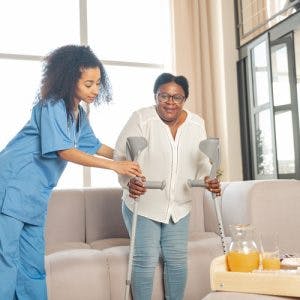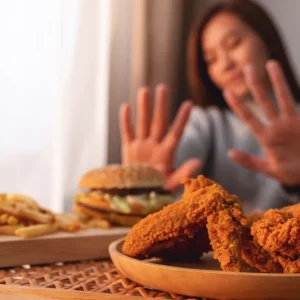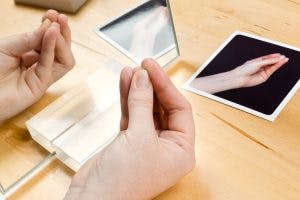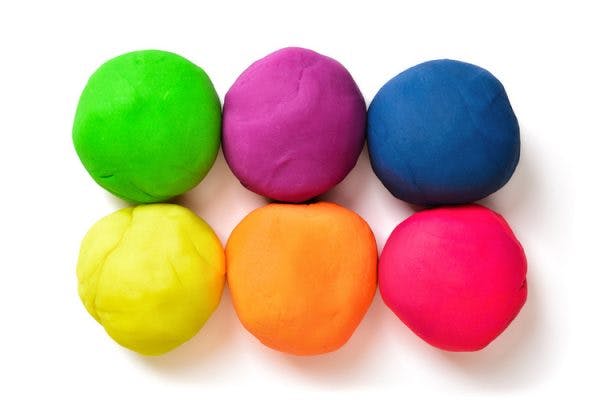Recovering from a stroke can seem more like a marathon than a sprint. Recovery is a gradual process that unfolds one repetition at a time. Whether you are involved in traditional or telerehabilitation for stroke recovery, the mantra of “one more time” can be the difference between lifelong dependence and becoming independent again.
Every attempt made and each movement you make, no matter how small, is a step on the road to recovery. In this article, we will discuss why “one more time” is so important in both traditional and remote stroke rehab and how it can help you or a loved one recover.
This is the final article in a 3-part blog series exploring telerehabilitation for stroke recovery.
Be sure to check out the entire series to learn more about what telerehabilitation is and how it works:
Jump to a Section
The Power of Repetition in Stroke Rehabilitation
The Science of Repetition in Stroke Rehabilitation
Bringing Research Into Practice
Steve’s Story of Repetition Through Stroke Telerehabilitation
Repetition Through Telerehabilitation for Stroke Recovery
Understanding Why “One More Time” Matters in Stroke Recovery
The Power of Repetition in Stroke Rehabilitation
Years of research have shown that one factor repeatedly stands out in stroke recovery: the power of repetition. After a stroke, the brain has the miraculous ability to reorganize itself, thanks to a process called neuroplasticity. High repetitions of task-specific movements fortify this rewiring process and form new neural connections.
By repeatedly practicing specific movements and tasks over and over again, you strengthen the new neural connections being formed in your brain. The more an exercise or activity is repeated, the more it reinforces those new pathways.
For stroke survivors, doing the same rehabilitative exercises and practice activities many, many times is key to rewiring the brain and regaining abilities. The power of repetition harnesses the brain’s neuroplasticity to maximize recovery.
Here’s what the research says about the importance of repetition in stroke recovery.
The Science of Repetition in Stroke Rehabilitation
A notable study published in the American Journal of Physical Medicine & Rehabilitation (2018) found a strong positive correlation between the frequency of upper limb exercises and motor recovery in stroke survivors. Another study in the Journal of NeuroEngineering and Rehabilitation (2019) highlighted the effectiveness of high-intensity, repetitive task training for improving arm function.
The underlying message from this research makes it clear that doing more repetitions helps improve recovery outcomes.
Bringing Research Into Practice
Meta-analyses and reviews from sources like the Cochrane Library and the European Journal of Physical Rehabilitation Medicine consolidate numerous studies. This research reinforces the importance of repetition, as highlighted in Steve’s story below. The research concludes that high-repetition, task-oriented therapy significantly enhances upper limb motor function.
What does this mean for stroke survivors? It emphasizes the necessity of integrating the affected side into daily activities to create a living rehabilitation environment.
Research suggests that between 300 and 600 repetitions of challenging functional tasks per day are needed for tangible neuroplasticity. The formula for recovery is clear: Engage in intentional, repetitive movements incessantly.
Everyone has a unique stroke recovery journey. Though each experience is distinct, learning how others overcame their challenges can be inspiring and reassuring.
Here is Steve’s stroke recovery story through telerehabilitation.
Steve’s Story of Repetition Through Stroke Telerehabilitation
Real-life examples show the power of repetition and further validate what the research suggests. Take Steve, a stroke survivor who faced the common challenge of learned nonuse. For years, Steve had stopped using his affected hand. He primarily relied on his unaffected side to complete everyday tasks.
But things changed when Steve decided to start using his affected hand again in daily routines. Steve’s commitment to repetition was anything but easy.
At first, even holding a water bottle was hard for Steve. Through perseverance and regular, intentional practice, he learned to control his grip and became adept at using his once-dormant hand.
Today, Steve has not only regained control to open a bottle smoothly but can also sign his name legibly. These were tasks he couldn’t do for 15 years after his stroke!
This is the kind of progress that comes from doing things “one more time.”
Repetition Through Telerehabilitation for Stroke Recovery
Sometimes it can be difficult for stroke survivors to access rehabilitation services. This may be due to problems with transportation, getting around, or living far away from hospitals and clinics.
With telerehabilitation, patients can meet with a skilled therapist from their homes for assessment and therapy visits through secure videoconferencing platforms. Physical therapy, speech-language pathology, and occupational therapy can all be performed in this virtual format.
Stroke survivors can work on repetition and rebuilding skills affected by their stroke, such as:
- Motor Skills and Movement: Home-based physical and occupational therapy programs can help stroke survivors regain strength, flexibility, and motor control in their arms and legs. Therapists will guide you remotely through personalized routines that incorporate repetition into exercise and performing activities of daily living.
- Communication: If you’re struggling with aphasia or other communication disorders after a stroke, telerehab provides access to speech-language pathologists and virtual support technologies that encourage practice and high repetition of communication skills.
- Cognitive and Speech Rehabilitation: Telerehabilitation for stroke recovery can deliver interventions targeting cognitive impairments like memory loss, problem-solving difficulties, and speech disorders.
Understanding Why “One More Time” Matters in Stroke Recovery
As we have outlined, the evidence is clear that “one more time” matters in stroke recovery. Are you ready to take a step toward empowering yourself with the support, expertise, and technology you need to maximize your recovery?
Stroke rehab shouldn’t feel like an insurmountable hurdle. You will want to work together with your physical and occupational therapist to create a plan that uses repetition as your stepping stone to reclaim independence, one movement at a time.
Additional Resources for Stroke Telerehabilitation
Remote Rehabilitation for Stroke Patients: What Sets it Apart?
Stroke Telerehabilitation: Does it Really Work?










